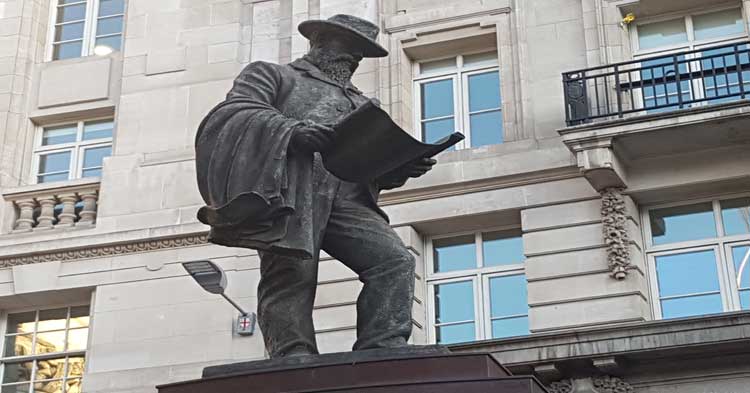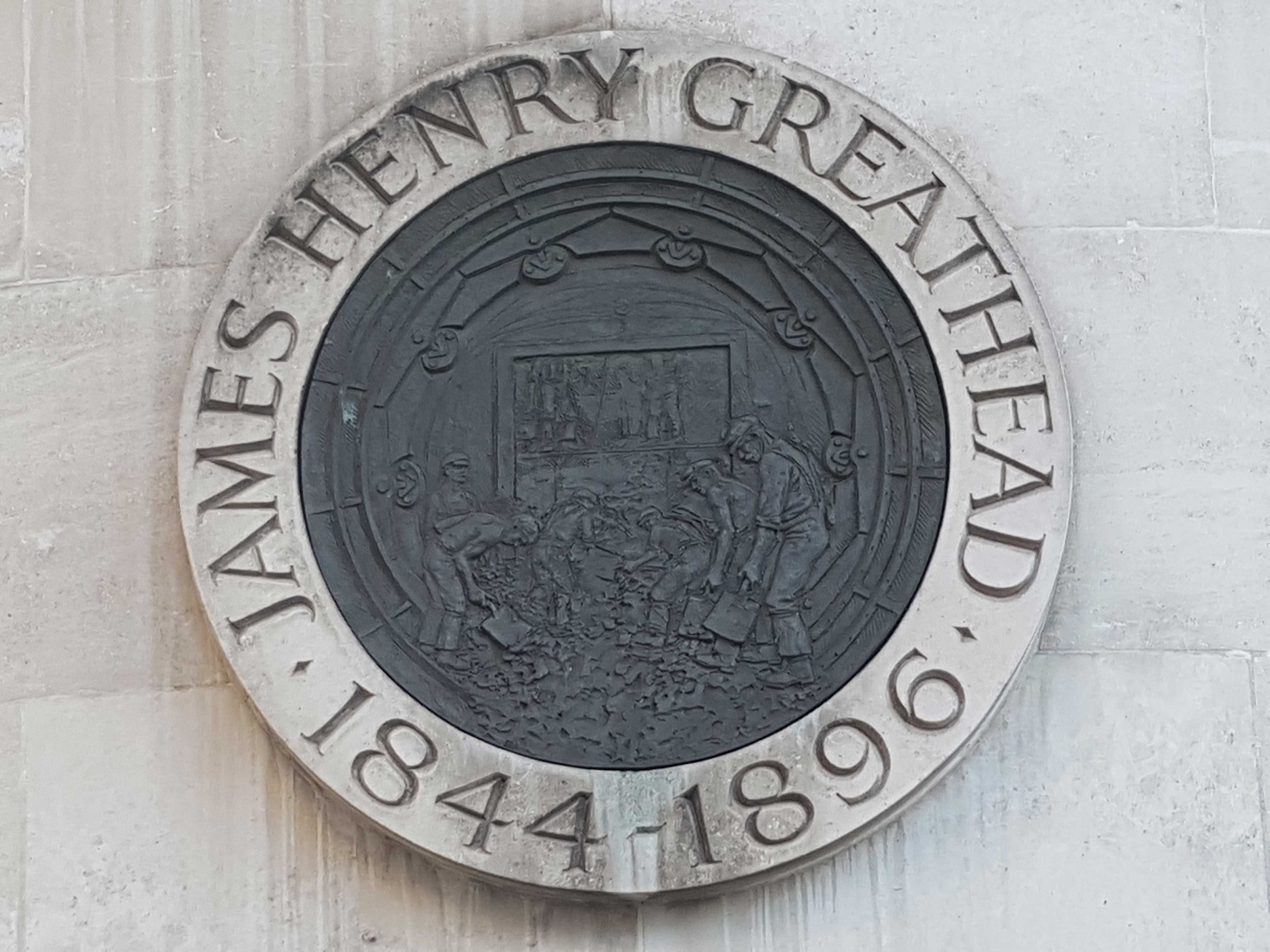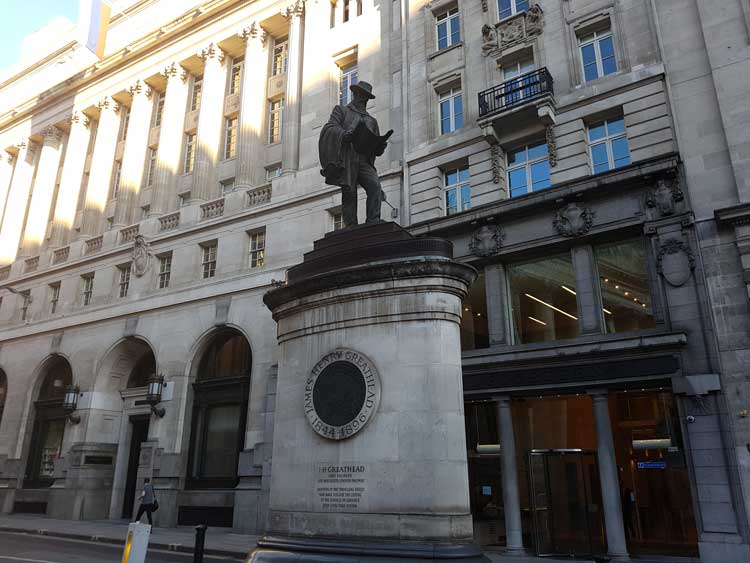
It is difficult to miss this extremely prominent statue of James Henry Greathead (1844 - 1896) - which was unveiled in 1994 and which was the work of the sculptor James Butler - as he stands slap bang in the centre of the road.
He looks particularly studious as he leans forward beneath a splendidly wide-brimmed hat that casts a perpetual shadow across his face.
His attire is that of the late Victorian period, with overtones of Indiana Jones; his overcoat is draped neatly over his arm.
His head is bent forward as he studies a set of plans that he is holding in both hands.
A South African by birth, James Henry Greathead arrived in England in 1859, aged fifteen, in 1859, and set about training as an engineer.
In 1884, Greathead was appointed engineer on the London (City) and Southwark Subway, which later became the City and South London Railway, which is now part of the Northern Line.
This line has the distinction of being the world's first underground electric railway, and it was Greathead's ingenuity that made it possible.

Although you might not instantly know his name, you most certainly are familiar with his most famous invention, as there's a good chance you have benefited from it - if not on your journey to Cornhill, then, most certainly, at some stage during your time, or life, in London.
You see, his greatest invention was the "Greathead Shield" - also known as the "Travelling Shield" - a one piece, circular tunneling device that made possible the excavation of the deep level underground tunnels which enable use to be whisked, deep beneath the streets, from one end of London to another in the blink of an eye.
Indeed, so important was his invention to the development of the London Underground system, that James Henry Greathead is sometimes referred to as "the father of the tube".
A relief on one side of the pedestal, atop of which Mr. Greathead strikes his perpetual studious pose, depicts a group of eight men shoveling and manually transporting earth. They are working inside a multi-jointed ring which is presumably the travelling shield.
So revolutionary was his Travelling Circular Shield, that it is still the basis - with a few modern refinements and additions - for many of the tunneling devices still in use today.
For my money, that makes Greathead a great man, and he is well-deserving of great honour and remembrance (unless, of course, you happen to be travelling in the rush hour), and I think every commuter who emerges from Bank Underground Station - across from Exit Three of which his statue stands - should pause for a brief moment and salute this titan of the tubes.
The statue is in fact a cover for a ventilation shaft for Bank Underground Station, which is beneath the street around him.
Following the terrible King's Cross fire, on November 18th 1987, one of the recommended safety improvement measures suggested for the underground system concerned the ventilation system.
Initially, the idea was to site a vent directly in front of the Royal Exchange, but there was a consensus that so-doing would spoil the wonderful aesthetic of the forecourt.
The compromise was to site it in the center of the road and then use a statute to disguise the presence of the vent.
Various suggestion were put forward to suggest a suitable candidate, but it was James Henry Greathead - thanks to his contribution to the underground network - who was finally chosen to grace the spot.
On the 17th January 1994, Paul Newell, the then Lord Mayor, jumped onto a "cherry picker" and performed the unveiling ceremony for the statue.

And if you look closely at the top of the pedestal on which he stands, directly beneath Mr. Greathead's feet, you can make out the gap which houses grills of the aforementioned ventilation shaft that his statue disguises.
In a way, it is a wonderful tribute to the man who made possible that which lies beneath the street on which he stands.